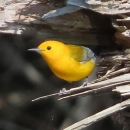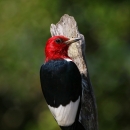Visit Us
Bottomland hardwood forests, wetlands, and prairie combine to offer a showcase of diverse and unique plants and animals. Marais des Cygnes National Wildlife Refuge provides numerous recreation opportunities. Visitors enjoy viewing the forests, prairies and diverse wildlife, whether boating, driving or walking. Regulation of recreation activities allow for public enjoyment of the refuge while still protecting its wildlife and habitats.
Location and Contact Information
About Us
Marais des Cygnes National Wildlife Refuge was established in 1992 primarily for the preservation and restoration of bottomland hardwood forest. The Refuge is named after the Marais des Cygnes River which runs through the middle of the refuge and is the dominant natural feature of the region. The name, Marais des Cygnes, comes from the French language and means Marsh of the Swans. The 7,500 acres of the Refuge encompass a variety of habitats from bottomland hardwood forests dominated by oaks and hickory to scattered prairie areas. The area along the Marais des Cygnes River floods regularly, recharging the nutrients in the soil and providing habitat for a variety of wildlife from otters to wood ducks. About 2,500 acres of the Refuge is closed to visitation and provides a haven for wildlife including the many migratory birds that use the forests for food and shelter. During the summer the woods are alive with the sounds of birds from the lilting song of the prothonotary warbler to the drumming of the red-headed woodpecker and the loud noises of blue jays.
What We Do
Bottomland hardwood forest protection and restoration is the primary management activity on Marais des Cygnes. Over 80% of bottomland hardwood forests have been destroyed nationally and the rest are fragmented and relatively small. In addition, human manipulation of rivers and streams has changed the natural flooding that is necessary to sustain healthy floodplain forests. The annual floods are important for supplying nutrients to flood-plain forests, filling forested wetlands and supporting growth of plants adapted to this habitat. Bottomland forest restoration includes tree or nut (seed) planting, restoration of forested wetlands, and modifications of the types of trees, shrubs and vegetation understory.

